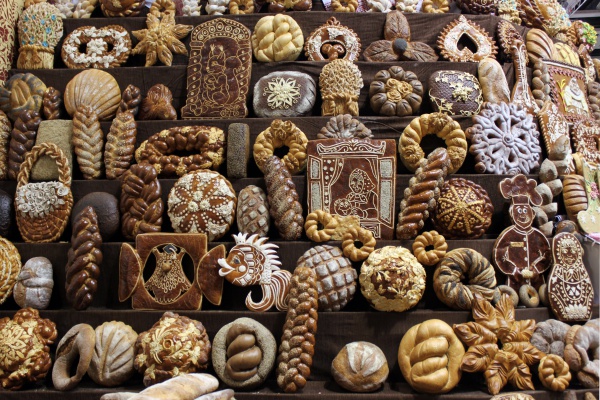Facts About Korovai
The korovai, also known as karavai, is a traditional bread highly valued in Bulgaria, Russia, Ukraine, and Romania, particularly at weddings due to its profound symbolic significance. This tradition remains vibrant in Belarus, Russia, Ukraine, and among Russian and Ukrainian communities worldwide. The korovai’s origins are deeply rooted in the ancient Rus traditions of hospitality and festive celebrations, with its circular shape playing a pivotal role in the bread and salt ceremony.
The bread’s history is steeped in ancient pagan beliefs regarding the magical properties of grain. Typically large and circular with a braided design, the korovai is crafted from wheat flour and adorned with intricate decorations such as flags, suns, moons, birds, animals, and pine cones. Additional embellishments might include wheat stalks, herbs, nuts, flowers, and fruits, with specific designs and decorations varying by region and often featuring colors like red, gold, and silver.
Traditionally, the korovai was baked in the bride’s home by a group of women known as korovainytsi. These women would sing traditional songs as they worked, imbuing the bread with cultural significance. The korovai's decorations bear symbolic meanings, representing the couple, their families, and friends. Before baking, the bread is blessed; later it is shared among the wedding guests, serving as a highlight of the ceremony.
In times when a full wedding celebration wasn’t feasible, sharing the blessed korovai could often suffice to solemnize a marriage within the community. The top part of the korovai, symbolizing the Moon, is divided among the couple, the bride’s parents, and other significant individuals. In some areas, additional symbolic items made of dough are included for particular family members. The bottom part, known as the pidoshva, is often distributed to guests and musicians, symbolizing good luck and prosperity for the future.

 Lithuania
Lithuania